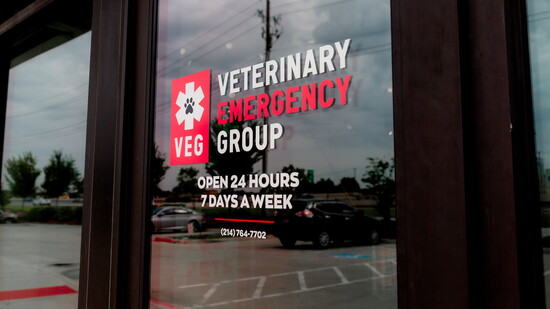Welcoming a new pet into the family is a joyous initiation. However, with it comes a responsibility that begins the moment you start thinking about a new comrade.
The journey of adjustment to a new home for a pet varies immensely. Success in acclimating will depend on a host of factors, including the pet’s history, health, personality—and you.
We asked the experts at VEG ER for Pets (Veterinary Emergency Group) for their top tips. VEG is a 24/7, open-concept veterinary emergency facility, and staff is highly trained in both surgical and nonsurgical solutions. However, providing education for the community is a core element of their work too.
“My first tip is for families to consider their lifestyle and be conscientious about it: How much time do you spend at home, how many children and prior pets are at home, and how much attention can be devoted to your furball?” explains Dr. Annie Kwok, medical director at both the Allen and Grand Prairie hospitals.
“While, at VEG, we treat pets like people, we should remember they don’t communicate or acclimate like people. We need to give them more time, grace, and patience as they acclimate. They are sensitive to changes in routine, and new pets absolutely need 24/7 supervision for the first several weeks.”
“When selecting a pet, think breed-specific,” advises VEG’s nursing manager, Cheyenne Palma. “For example, an Australian cattle dog is an active, working dog and needs a job to do! This breed wouldn’t be a good fit for someone who needs a more calm/cuddly pet.
“Have this specific breed in mind before going to the animal shelter to adopt. Teach your children what animal behavior looks like. Explain how dogs and cats get scared. Remind children about how they felt when they were scared—like maybe when the family went on vacation to a new, strange place. Your reaction is like the animal’s reaction! Let the animal smell you first. Reach out your hand and let them check you out. Same with cats, who don’t like sudden movements or loud sounds. Don’t be afraid if a cat lightly brushes their nail across your skin. Explain to children that it doesn’t mean they’re aggressive; this is the way they play.”
Once home, acclimating pets is another rite of passage. “Generally with cats, it’s important to give them their space. They are known to be more territorial and may be hesitant to welcome a new kitty. The best way to introduce them is to keep them separated at first but allow their scents to comingle. For example, give the new cat a whiff of your current cat’s favorite blanket, or vice versa. While scent is important for dogs too, it is helpful to let them see each other by having both of them on leashes in a generally “neutral” zone outside the house. Slowly you can graduate them to being in a shared space inside the house.
“Always supervise your animals when outside, even in the backyard,” emphasizes Cheyenne. “Predator animals roam our neighborhoods, and it’s their nature to prey on smaller animals as they are looking for the easiest catch. Turn on all the lights and make some noise so predators will be less likely to attack.”
“Many emergencies are avoidable,” reflects Dr. Kwok. “Sometimes we see animals brought in for ER care as a result of stress; stress that was induced because they just didn’t fit into the lifestyle of their owners. When people don’t select the right animal for their household, it sometimes results in neglect of the animal.”
“This “mismatch” manifests in many ways: for example, the senior dog who is fearful of small children gets adopted into a noisy and chaotic household and develops anxiety; or an active, attention-seeking, playful dog who is always let out in the backyard unsupervised gets bit by a snake. While these may seem like minor things, they can turn into something major if left unchecked. Don’t underestimate the impact of your lifestyle on your pet.
“Cats are sensitive to change. Transitions trigger stress (such as cat owners who leave the house frequently for multiple days at a time). This stress is often at the bottom of their health issues. In the ER, we see this as feline idiopathic cystitis. In male cats, the lower urinary tract is where the stress manifests, causing inflammation and blood, crystals, or stones in the urine. Sometimes the swelling of the tissues obstructs the urinary tract and can be life-threatening.
“With dogs, it’s their GI tract that 'captures' the stress. It shows up as vomiting or acute hemorrhagic diarrhea, where the diarrhea is bloody. This can require immediate stabilization and IVs in the ER,” Dr. Kwok continues.
“While emergency is our middle name, we like to think of ourselves as the calm in the midst of storms,” reflects Cheyenne. “Our responsibility to keep our pets healthy doesn’t include just preventative care and ER care. It starts with patient education early on during the selection of a pet.”
Got questions? Contact https://www.veterinaryemergencygroup.com/
“While, at VEG, we treat pets like people, we should remember they don’t communicate or acclimate like people. We need to give them more time, grace, and patience as they acclimate."
